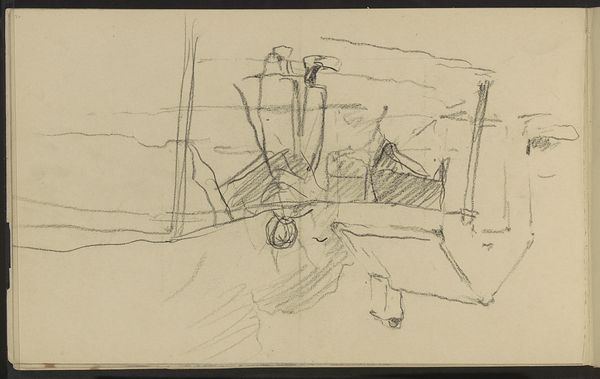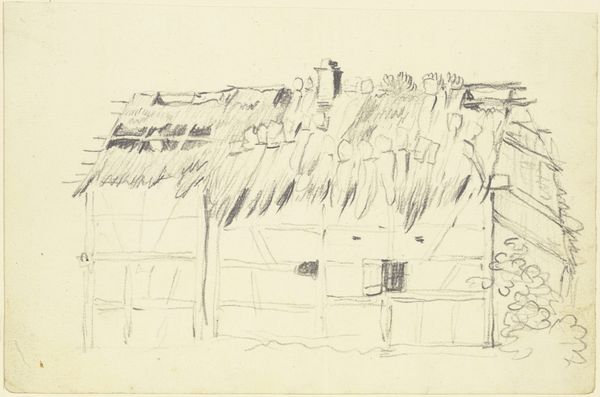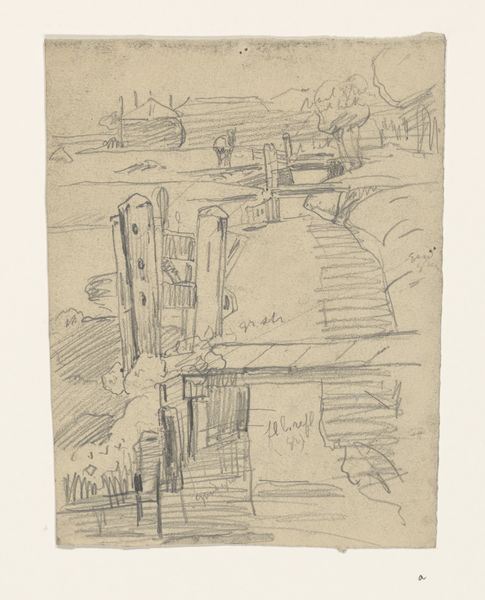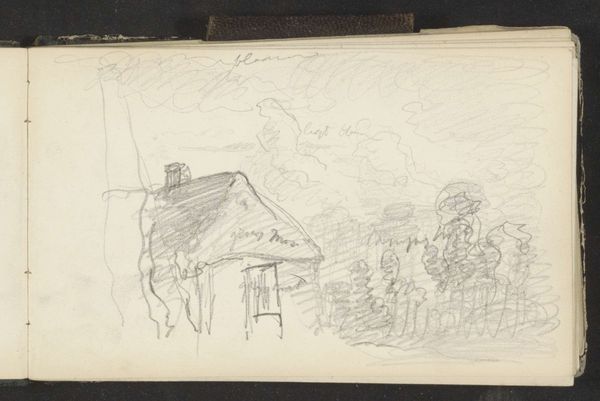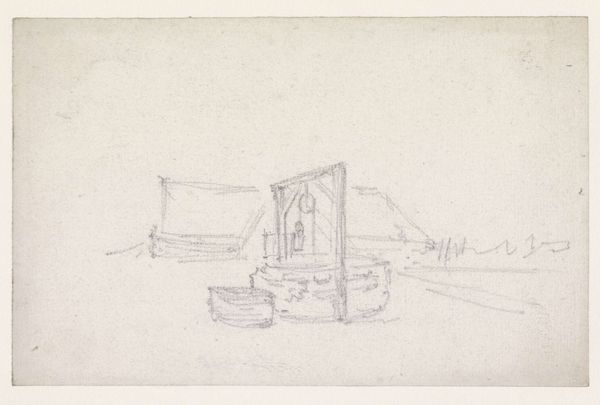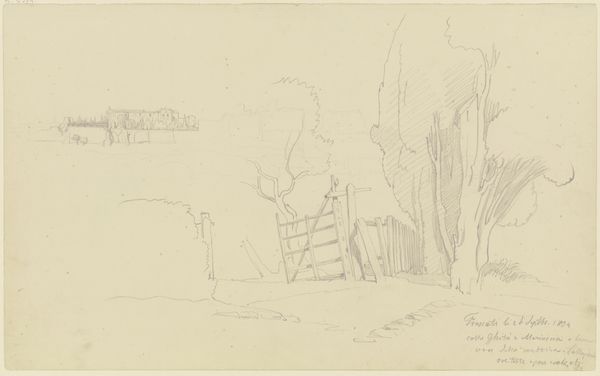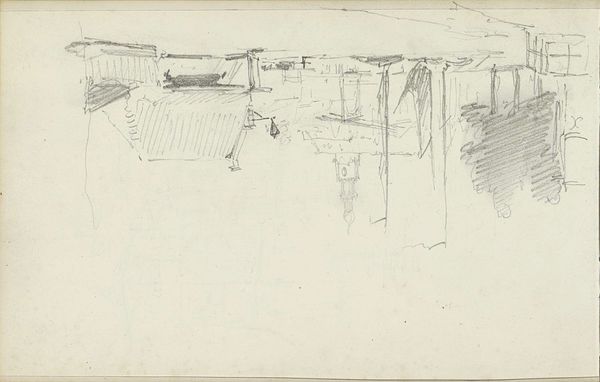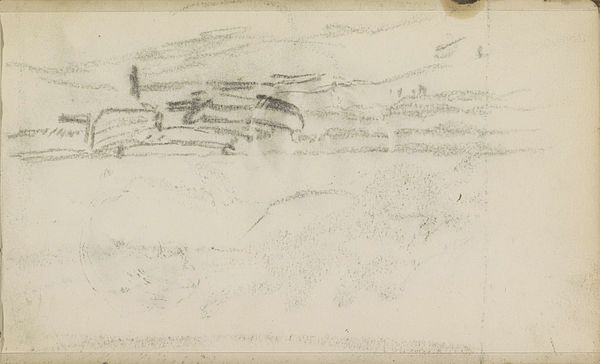
drawing, pencil
#
drawing
#
quirky sketch
#
landscape
#
personal sketchbook
#
idea generation sketch
#
sketchwork
#
ink drawing experimentation
#
folk-art
#
pen-ink sketch
#
pencil
#
sketchbook drawing
#
storyboard and sketchbook work
#
sketchbook art
#
realism
#
initial sketch
Dimensions: height 175 mm, width 270 mm
Copyright: Rijks Museum: Open Domain
Curator: Looking at this pencil and ink drawing, "Hek in een polderlandschap tussen Volendam en Edam," from the late 19th or early 20th century by Jan Hoynck van Papendrecht, I immediately feel like I've stumbled upon a private moment. Editor: It does feel like peering into an artist's sketchbook. The casual lines, the immediacy... there's a certain intimacy. But it’s more than just a personal glimpse; I feel this inherent record of the modernization in dutch landscape painting. Curator: Absolutely! Notice how the landscape itself is almost a supporting character. The emphasis seems to be on the gate – the 'hek' of the title – and the figures in the foreground, they ground me to the historical context, folk elements. The use of pencil and ink suggests it was a preliminary sketch, perhaps for a larger work or maybe just a study of a scene that caught the artist's eye. Editor: I think that is a plausible explanation, but considering Jan Hoynck's overall artistic expression this specific scene and location also play a pivotal role in how we receive this drawing. Volendam and Edam during this time had thriving fish industry. And fences are a commodity that supports and protects cattle and other livestocks within this landscape. I would rather reflect about this contrast than assuming the pure intuitive sketch for the larger production. Curator: That's a really interesting take. The sketchiness almost gives it a raw, unpolished feel. You see how the gate dominates the composition. I find it fascinating that even in something so seemingly simple, there's this suggestion of access and denial, division and connection. Editor: Indeed! The seemingly ordinary scenes—daily labors in the polder—actually reflected broader changes within Dutch society that connect landscape, labor and production that artists portrayed at the time. These intimate depictions democratized and contributed to social visibility during an era with social changes. Curator: So, more than just a landscape, it’s a document. How that artistic act, almost a quick meditation transformed the mundane and recorded it through his own lens of observation. It’s thought provoking and rather beautifully captured through simple strokes. Editor: Agreed. And ultimately, the drawing invites us to reconsider how art and culture shape each other by the transformation from the land into national values through a cultural artifact, such as, for instance, a sketch!
Comments
No comments
Be the first to comment and join the conversation on the ultimate creative platform.




